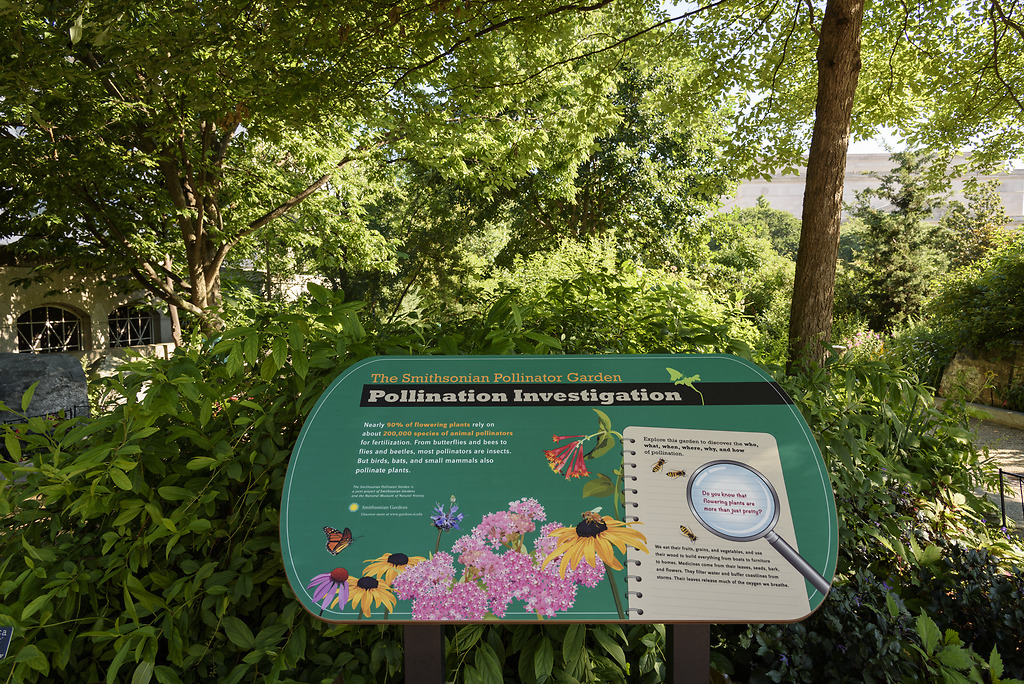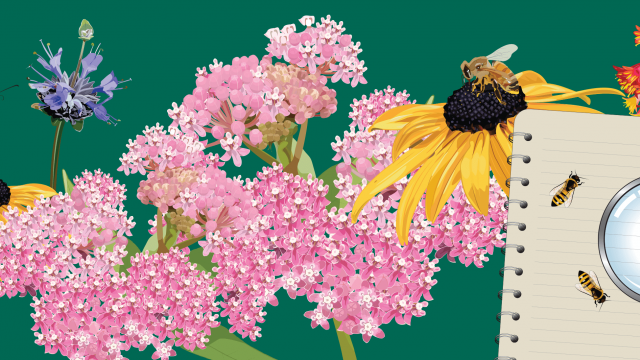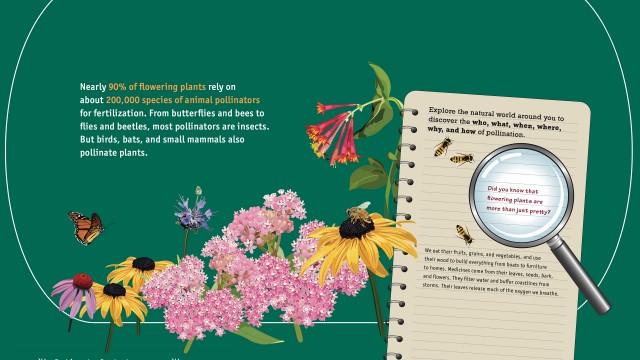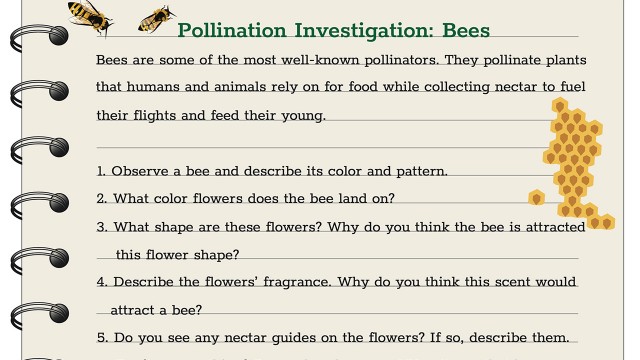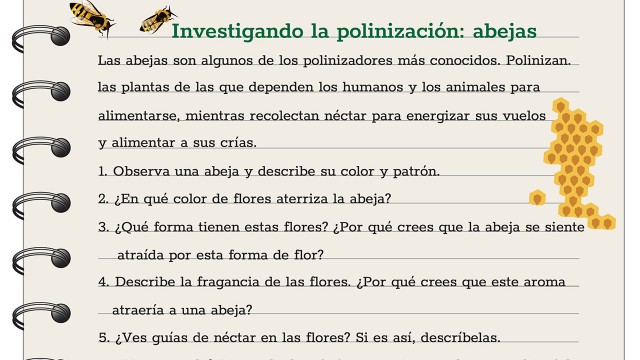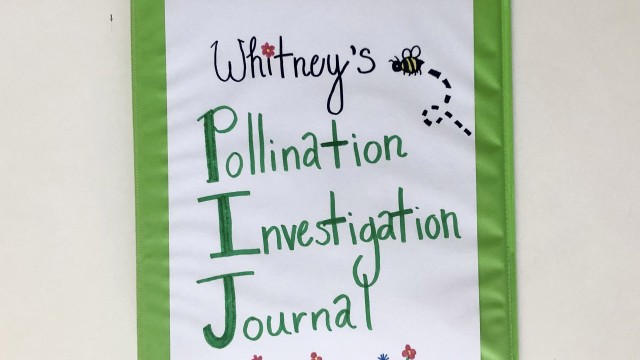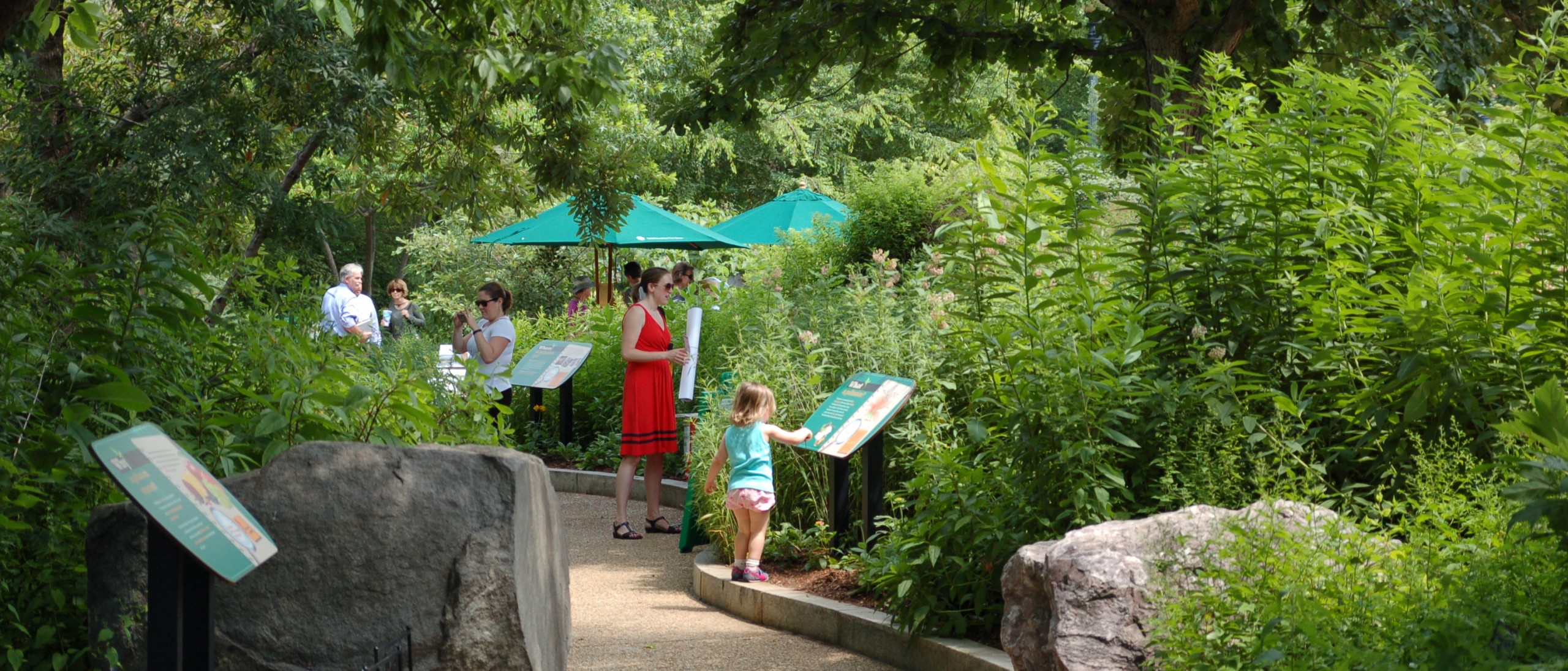
Pollinator Garden at the National Museum of Natural History
A showcase of natural plant partnerships.
Click here to view the Tree Collection and Display Collection inventories for this garden.
Nearly 90% of flowering plants rely on approximately 200,000 species of animal pollinators for fertilization. From butterflies and bees to flies and beetles, most pollinators are insects. But birds, bats, and small mammals also pollinate plants.
Pollination is vital for a strong ecosystem. Pollination has evolved over millions of years and benefits both flowering plants and pollinators. One in three bites of food that’s eaten depends on pollinators! Pollination by honeybees and other species adds $24 billion in value to the agricultural crops in the United States each year.
The Pollinator Garden along the east side of the National Museum of Natural History highlights the interdependency between plants and pollinators. The plants, grasses and trees in the garden are selected to provide nourishment and shelter to pollinator insects. Visitors to the garden can join Smithsonian Gardens on a pollination investigation to explore the who, what, when, where, why, and how of pollination.
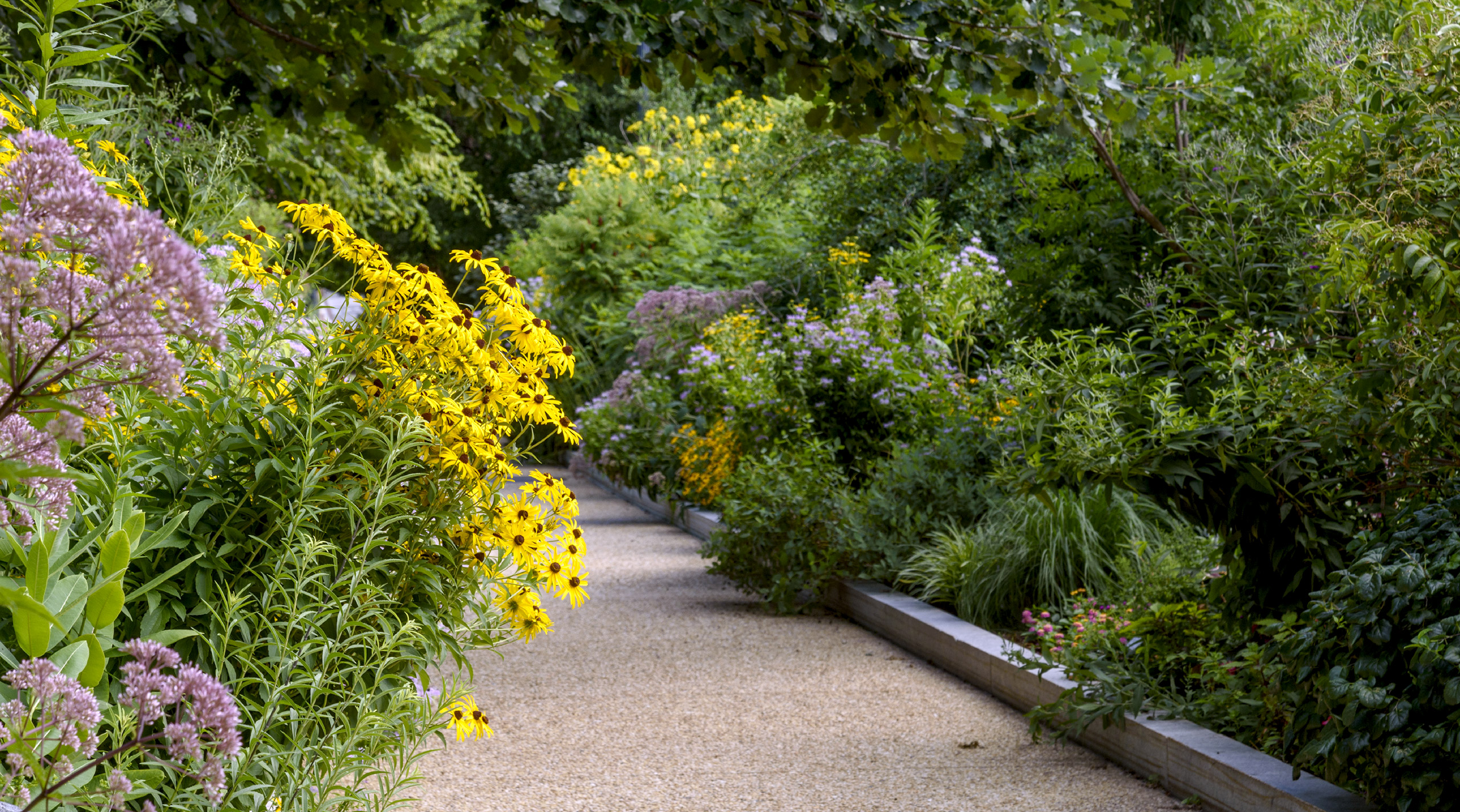





Garden History
The Pollinator Garden originally opened in 1995 as the Butterfly Habitat Garden with funds from the Smithsonian Women’s Committee, a group dedicated to supporting education, outreach, conservation, and research projects within the Smithsonian through its fundraising activities.
In 2000, The Garden Club of America designated the Butterfly Habitat Garden as one of its Founders’ Fund Projects, enabling the Smithsonian to expand the garden by tripling its size. The gift also provided for the installation of walks, an irrigation system, and an amphitheater seating area. The GCA’s goal is to promote environmental restoration, improvement, and protection through education and conservation and civic engagement in the field.
The Butterfly Habitat Garden was re-dedicated as the Pollinator Garden in June 2016. This transition showcases a wider diversity of pollinators and emphasizes their relationships to beneficial native plants. The garden features a wide variety of primarily native plants for year-round interest and to attract hummingbirds, butterflies, bees, and more.
Set in the Pollinator Garden is Pollination Investigation, an exhibit that allows visitors to discover the who, what, when, where, why, and how of pollination with vibrant educational panels. Pollination Investigation is a joint project of Smithsonian Gardens and the National Museum of Natural History. For more pollinator exploration, visitors can head to the Butterfly Pavilion located inside the National Museum of Natural History.
Pollination Investigation
Nearly 90% of flowering plants rely on about 200,000 species of animal pollinators for fertilization. From butterflies and bees to flies and beetles, most pollinators are insects. But birds, bats, and small mammals also pollinate plants.
Do you know that flowering plants are more than just pretty?
We eat their fruits, grains, and vegetables, and use their wood to build everything from boats to furniture to homes. Medicines come from their leaves, seeds, bark, and flowers. They filter water and buffer coastlines from storms. Their leaves release much of the oxygen we breathe.
Who pollinates?
Plants and pollinators evolved side by side over millions of years. Natural selection has resulted in physical adaptations in both plants and pollinators. Plants have developed many complex ways of attracting pollinators. Similarly, pollinators have evolved with specialized physical traits and behaviors that enhance their pollination efforts. Each participant, plant and pollinator, usually gains a benefit from pollination.
Most plants need help from wind, water, and a diverse group of animals called pollinators to fertilize their flowers and reproduce. Pollinators have distinct preferences for the flowers they visit.
Do you know bees and flowers have secrets?
Bees and a few other pollinators can see the ultraviolet (UV) part of the light spectrum. Flowers like Black-Eyed Susans that look uniformly yellow to humans actually have nectar guides that help pollinators quickly locate the center of each flower.
What is pollination?
Pollination is an essential part of plant reproduction. Pollen from a flower’s anthers (the male part of the plant) rubs or drops onto a pollinator. The pollinators then take this pollen to the next flower, where the pollen sticks to the stigma (the female part). The fertilized flower later yields fruit and seeds.
Do you know why some bees buzz?
Some plants like tomatoes and blueberries release their pollen through two tiny spores in each anther. Bees bite the anthers, hold tight, and buzz to shake the pollen out of the flowers. Bumblebees are living tuning forks, using a middle C tone to propel thousands of pollen grains from a flower in under a second.
When does pollination happen?
Successful pollination requires year-around efforts. Plants have evolved with differing flowering times that decrease competition among pollinators. Continuous blooms throughout the growing season provide pollinators with a constant food supply.
Spring: Pollinators need early blooming plants to provide food after hibernation or northern migrations. Bulbs, spring ephemerals and spring blooming fruit trees are visited during this time.
Summer: Our gardens achieve their peak bloom when many pollinators reach peak populations. The long days of summer allow pollinators the maximum time to forage for nectar.
Fall: Late blooming plants provide many pollinators with needed fuel before hibernation or for the southern migrations of pollinators like monarchs and hummingbirds.
Winter: Even when there appears to be no activity, pollinators are in the garden. Leave decaying plants alone—they may be sheltering pollinating insects as they overwinter.
Do you know some butterflies travel thousands of miles?
At the beginning of each spring, monarch butterflies migrate north from Mexico, following the growth of milkweed. They travel up to 30 miles a day, returning to Mexico in the fall.
Where do pollinators live?
Pollinator habitat depends on the pollinator and their life cycle stage. For example, bees can use leaves, mud, sand, plant resins and even abandoned snail shells for their nests, while many butterfly larvae live and feed only on one specific plant. Pollinators also need foraging habitat with diverse nectar-providing plant species.
Human activities, such as farming, housing development, and road construction, can fragment a pollinator’s habitat, disconnecting where the pollinator lives from where it forages for food. Pollinator habitats need to be within easy range of food and clean, shallow water.
Do you know how bees find a flower patch?
Honey bees communicate through a waggle dance in which scout bees return to the nest and dance to inform other bees about the distance and direction of a newly discovered flower patch.
Why is pollination important?
Pollination is vital for a strong ecosystem. Pollination has evolved over millions of years and benefits both flowering plants and pollinators.
One in three bites of food you eat depends on pollinators. Pollination by honey bees and other species adds $24 billion in value to the agricultural crops in the United States each year.
How can you help pollinators?
Pollinator populations are at risk. Decades of stressors including the loss, degradation, and fragmentation of pollinator habitats; the improper use of pesticides and herbicides; and diseases, predation, and parasites have all hurt pollinators. Inspired by the Smithsonian Pollinator Garden?
You can help pollination by creating a pollinator-friendly habitat without sacrificing aesthetics. Add diversity to your landscape with a beautiful tapestry of native plants that have evolved with local pollinators and thrive under the conditions in your region. Reach out to your local extension office to research the best plants.
Do you know the importance of pollinator health has been noticed?
On June 20, 2014 President Barack Obama issued a memorandum to create a federal strategy to promote the health of honey bees and other pollinators.

